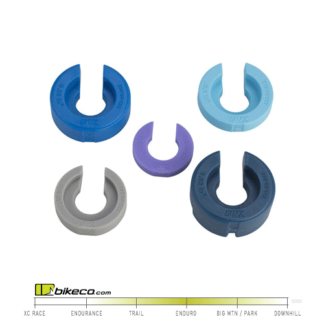Description

NOTE: FOX 36 Float Forks use Orange PN: 234-04-736, FOX 36 Rhythm forks use Purple PN: 234-44-079
FOX 36 Volume Spacers
Adjust the ramp rate of your FOX 36 fork with FOX fork volume spacers. Sold individually.
FOX 36 Rhythm Volume Spacers Details
FOX Float NA 2 Air Volume Spacer for 36. 10 cc, Purple
FOX Part Number: 234-44-079
UPC: 611056182291
FPFOX00282
From FOX’s tuning guide:
36 FLOAT
170mm travel: 0 spacers installed from factory. 5 spacers maximum.
160mm travel: 1 spacers installed from factory. 6 spacers maximum.
150mm travel: 2 spacers installed from factory. 7 spacers maximum.
140mm travel: 4 spacers installed from factory. 8 spacers maximum.
130mm travel: 5 spacers installed from factory. 9 spacers maximum.
FOX 36 tuning guide (link opens in a new tab)
*bike manufacturers may specify / deliver different spacers from factory
Learn more about how using FOX 36 Rhythm Volume Spacers interacts with other tuning aspects like Rebound and Compression in this quick video:
PSI / Spring Rate
MTB suspension must accommodate a wide range of rider weight. To achieve this nearly all forks and rear shocks use an adjustable air spring.
By varying air pressure riders set a desired sag, or percentage of travel that the bike “sits into” under neutral loading.
Modifying this sag percentage will change small bump compliance as well as bottom out characteristics.
Learning how to Pre-Charge your suspension pump will help you make finite adjustments to sag.
Typically 15% sag is for a firm setup and 20% sag is considered plush.
Air Spring Fine Tuning Control(s): Volume Spacers & Compression
Volume Spacers
Air springs ramp rate, sometimes called Spring Rate, is based on how air compresses in the containment cylinder. As the air is compressed the PSI increases according to the decreasing volume of the containment. This is done via non-compressible volume spacers in the air chamber.
Compression.
Hydraulic damping assists air spring providing support in mid-stroke and bottom out.
Opposing Control: Rebound.
Higher spring rate will drive the suspension back to neutral with more force than a lower spring rate. To keep the bike from skipping across trail rebound damping is utilized.
Volume Tuning
As suspension compresses (travel reduces) a piston moves closer to the end of a sealed container. By decreasing the volume of the container the PSI pushing back on the piston is increased.
By adding or removing non-compressible volume spacers riders modify the air spring’s ramp rate which directly changes the amount of support and bottom out feel of the fork or shock.
By removing volume spacers a rider increases the available volume in the suspension. The larger volume compresses less per mm of travel resulting in a lower PSI per mm of travel. This creates less support and is utilizes more travel.
Adding volume spacers decreases the available volume. With less air volume the PSI per mm of travel increases providing more support and greater resistance to bottom out.
Opposing Control: Rebound.
Rebound may need to be adjusted for volume tuning depending on how drastic of a PSI change is being tuned in or out of the suspension.
“Helping” Control: Compression.
Compression provides additional support and bottom out resistance.
Compression
Compression controls provide damping to slow suspension travel as a load is applied and the suspension is compressed. (easy one right?)
When riders have found sag and volume spacing preferences compression controls provide minute adjustments to dial in performance. Adding compression provides more support allowing the suspension to ride taller in its travel which is important when dialing in a bike’s personality in corners, etc.
With too little compression a bike will sit deep in the travel. This compromises cornering and braking force resistance. Headtube angle, bottom bracket height, front to rear weight bias, etc are modified as a bike goes through its travel. Maintaining control of the use of travel is paramount for good performance.
Since compression hydraulically slows the suspension’s use of travel it therefor lowers the air spring’s PSI. Properly setting compression controls will help ease the load on the rebound system by controlling the air spring’s push back onto the rebound circuit.
Too much compression will cause a bike to feel harsh and not use appropriate amounts of travel.
Generally, compression settings are fine tuned after sag and volume spacing have riders “in the ballpark.”
Low speed compression controls mid-stroke as well as support in cornering and against brake dive.
High speed compression helps with bottom out and high shaft speed inputs.
3 positions switches are a type of compression circuit with Open the most plush, Mid providing some additional support and Firm for climbing. If you climb in firm remember to put it back to plush for the downhill or you’re in for a potentially rough ride.
Rebound
Rebound damping controls a suspension’s shaft speed returning to a neutral position. Or, how fast the air spring pushes back as the load changes.
More rebound damping slows the suspension by decreasing the amount of fluid allowed to pass through the hydraulic design.
Less rebound damping allows the suspension to return faster with less hydraulic restriction on the damper.
Rebound setting is based on weight, ground speed, terrain and aggression. Setting the rebound properly means finding the right frequency or feel for your riding.
If your rebound is too fast, or doesn’t have enough clicks of rebound, the bike will tend to skip and suffer poor small bump compliance.
When the rebound is too slow, or you have too many clicks of rebound, the suspension may “pack up” creating a harsh ride as each bump uses progressively more travel forcing the suspension deeper into the travel, which will have higher spring rates.
Opposing: Air Spring PSI / Spring Rate.
“Helping” Control: Low & High Speed Rebound.
Some suspension is designed with 2 rebound circuits. The High Speed Rebound circuit is designed to provide additional control resisting increased PSI late in suspension travel.
Typically High Speed Rebound settings are used as the Low Speed Rebound controls edge towards closed. Example: you might not use any clicks of High Speed Rebound until you reach “X” clicks on the low speed.
Shop other FOX 36 Maintenance & Tools or Return to Suspension Maintenance
-
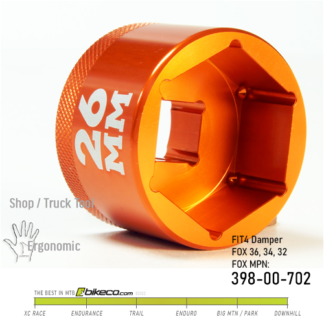
FOX 26mm Chamferless Top Cap Socket 398-00-704 FIT4
$25.00In-Stock: updated 04/26/24. Ships same or next business day!
Add to cart -
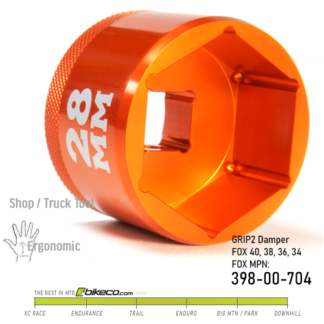
FOX 28mm Chamferless Top Cap Socket 398-00-704 GRIP2
$25.00In-Stock: updated 04/26/24. Ships same or next business day!
Add to cart -
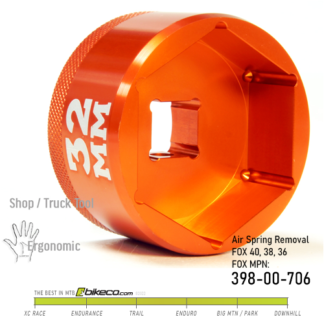
FOX 32mm Chamferless Top Cap Socket 398-00-706
$25.00In-Stock: updated 04/26/24. Ships same or next business day!
Add to cart -
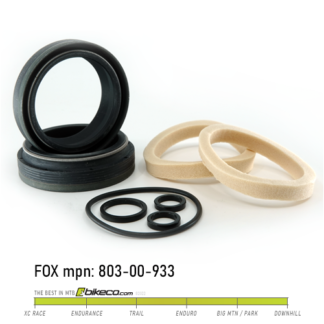
FOX 36 Dust Wiper Seal Kit 803-00-933
$30.00In-Stock: updated 04/26/24. Ships same or next business day!
Add to cart -
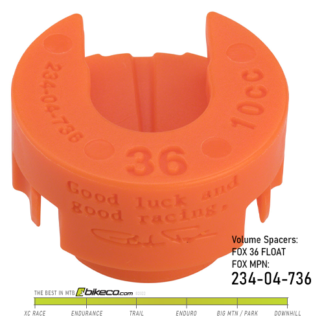
FOX 36 Float Volume Spacers 234-04-736
$2.50In-Stock: updated 04/26/24. Ships same or next business day!
Add to cart -

FOX 36 Rhythm Volume Spacers 234-44-079
$2.00In-Stock: updated 04/26/24. Ships same or next business day!
Add to cart -
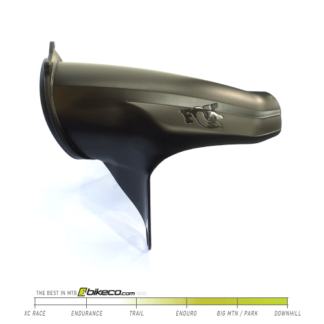
FOX Fender / Mud Guard Fits 36 & 38 803-01-441
$20.00In-Stock: updated 04/26/24. Ships same or next business day!
Add to cart -
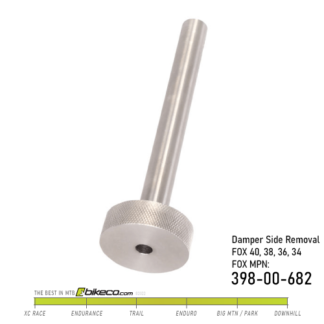
FOX Fork Damper Removal Tool 398-00-682
$50.00In-Stock: updated 04/26/24. Ships same or next business day!
Add to cart -

FOX Fork Spring Removal Tool 398-00-681
$60.00In-Stock: updated 04/26/24. Ships same or next business day!
Add to cart -

FOX Shock Pump 350 psi 027-00-017
$35.00In-Stock: updated 04/26/24. Ships same or next business day!
Add to cart -
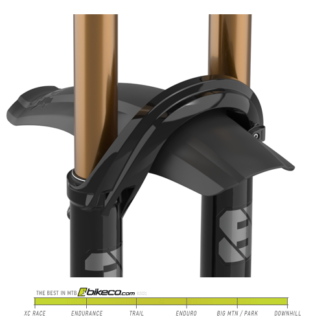
FOX XL Fender / XL Mud Guard Fits 36 & 38 803-01-751
$25.00In-Stock: updated 04/26/24. Ships same or next business day!
Add to cart
Shop other FOX fork volume spacers

-

FOX 32 Volume Spacers 234-04-811
$4.00In-Stock: updated 04/26/24. Ships same or next business day!
Add to cart -

FOX 34 Volume Spacers 234-04-953
$2.50In-Stock: updated 04/26/24. Ships same or next business day!
Add to cart -

FOX 36 Float Volume Spacers 234-04-736
$2.50In-Stock: updated 04/26/24. Ships same or next business day!
Add to cart -

FOX 36 Rhythm Volume Spacers 234-44-079
$2.00In-Stock: updated 04/26/24. Ships same or next business day!
Add to cart -
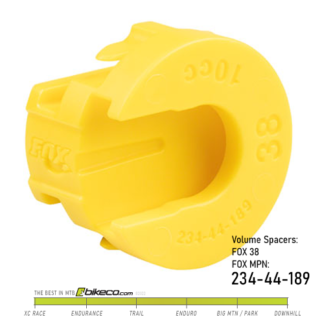
FOX 38 Volume Spacers 234-44-189
$3.00In-Stock: updated 04/26/24. Ships same or next business day!
Add to cart -
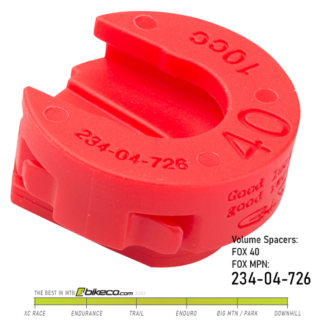
FOX 40 Volume Spacers 234-04-726
$2.50In-Stock: updated 04/26/24. Ships same or next business day!
Add to cart


